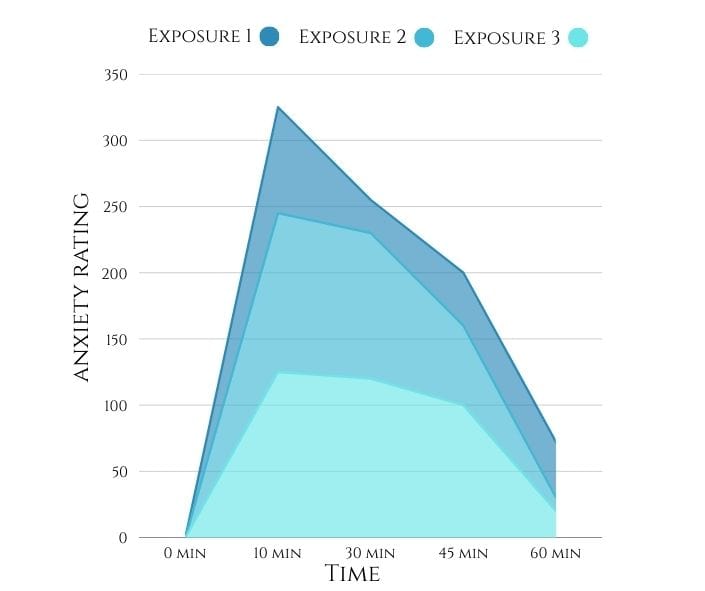Request Check Your Shocks


If you’re human, you’ve been afraid. Heck, you’ve probably even experienced the fear of something irrational, like the boogeyman or a monster under the bed. Those things aren’t real, but we experience them as though they are.
I’m willing to bet that if you’re reading this, you’ve probably gotten over your fears of the monster in the closet, although, if you haven’t, I’ve got a great new book called Turn Your Fear into Fuel that you could use to throw at them (literally or figuratively). I joke, but the root of that statement is founded in truth.
Have you ever wondered just how you got over those fears? How did you go from the inability to fall asleep and those long nights watching the shadows to sleeping like a baby in your teens? How did that happen without you being aware of it? At what point did you just mysteriously outgrow your fears? Well, the answer to this is that it wasn’t just one point, it was several.
When it comes to real fear management strategies and fear coping techniques, I have found that the best method to confront your fears is exposure. No need to hold your breath, just hear me out.
In behavioral science, there is a process that behaviorists call “habituation.” That is the ability to no longer be reactive to certain stimuli. Let’s say you have a fear of snakes (I’m right there with you). To habituate to the snake would be to get used to it, to allow him his space while you keep yours, and, if you become even more daring, maybe even to touch or hold the feller.
But how did you get from point A to point…touching the snake? What happened along the way that changed in such a way that you could now confront the thing you are most afraid of? It’s a shocking answer: you did. You are the thing that changed. You, in real terms, are habituated enough to overcome your fear. That is the beauty of exposure.
I’m going to do something I don’t do often. I’m going to put a chart in here to demonstrate the habituation curve, or the rate at which people habituate to an anxiety-inducing stimulus.

You’ll notice that this graph measures certain anxiety levels over time. You’ll also notice that the first time the person is exposed, the anxiety peaks higher and lasts longer. The second time, it’s not quite as bad, and the third even less so. By the fourth or fifth time, there is almost no anxiety peak over time…at all. So this is where the boogey man and the monster ended up; they disappeared into the ethers of habituation as your parents, very wisely, I might add, forced you to face your fear by staying in your room.
Another personal development style that many people use to confront their fears is challenging negative self-talk. Why? Because it’s very difficult to be fully afraid if part of you is rational enough to challenge the fearful thoughts.
This technique of self-growth through fear is best used in conjunction with the exposure method above. I listed that first because people have had the most success by far, over time, with that one. But you know what? They start slow with small fears. They don’t just shove people to the edge of a cliff (another one of my worst fears). They start small with a fear of elevators or second stories, and they very slowly work their way up to the cliff. If they didn’t, they might be so overwhelmed that they run down the hill and never, ever turn back.
Self-talk and challenging thoughts through ALL of this is so important to keep in mind. If you can talk to yourself as though you were a child, that will help you grow faster than you can imagine.
I would argue that part of the process of habituation includes visualization. If you walk yourself mentally through your challenges and your fears time and time again, trying to place yourself so exactly as to bring up anxiety without actually experiencing the stimulus itself, that is some valuable work.
You always want to “look where you’re going.” That includes visualization.
These dry runs help to give you courage enough to even face the fear in real life, as you see yourself doing it over and over again in your mind. In fact, depending on how well you can mentally put yourself in that very situation, I would argue that the brain might not know the difference between your virtual experience and the real thing. How’s that for mindful growth?
There’s power in numbers, of this, I am sure. When we were battling it out for the future of Primerica, I didn’t go into those board rooms at Citigroup alone; I had great people on either side of me, people I trusted to help see me through to the other side. And you know what? None of us ever died in there. We always walked out TOGETHER.
People often benefit from finding a friend they trust to help them confront their fear, someone with experience around a particular thing, and then they can ask for help to acclimate and habituate to the fear. Having someone in your life you trust enough to help you overcome fears is a special person. Either way, you gain an exceptional person in your life when you seek support from others and allow them to help.
All fear presents a growth opportunity. When you reframe it this way, you offer yourself the ability to accept the challenge in a positive light. Your fear no longer needs to represent death and annihilation; it can now represent a more robust, more well-rounded version of guess who? YOU!
One thing I have found helpful with the piece about reframing fear as an opportunity as a means to growth is that it removes the obstacles to taking steps. Everyone can probably say they want to advance themselves in some way, and even if they follow that up with, “NO WAY. NOT THAT. I’LL NEVER DO THAT to get over my fear of xyz,” they will probably at some point find the courage to work on that very fear.
Committing to taking action around my fear of snakes looked like a lot of choosing to walk in the grass in places where I was pretty sure there were no snakes. I started small in a predictable environment and gained some comfort there before I moved along to literally taking steps in deeper and deeper grass.
But you know what? I still compromise and often take a walking stick with me just in case. It not only stabilizes my steps on uneven terrain, but it stabilizes my mind’s terrain enough that I can achieve my goal without too much distress, if any at all.
The important part is that I kept taking steps toward my goal. Walking with someone to go ahead of me. Walking in bright light, and then at dusk, and then in the dark. Walking on other people’s yards in fenced areas was a great help. But no matter where I went, I focused—in some small way—on achieving dominion over my fear of snakes and habituating to walking in tall grass despite the possibility that I may one day come face to face with one.
Let me tell you, small steps turn into big leaps before you know it.
I don’t want to downplay here the importance of the habituation curve. It’s important. It helps people experience the ability to face their worst fears, and it leaves them standing, whole, on the other side. But there are other means by which you can overcome your fears, and they shouldn’t be overlooked either.
I mentioned it above, but I just wrote a second book called Turn Your Fear into Fuel, and it talks about my personal experience with fear. It talks about facing it and overcoming it, even in times when I was pretty sure it was going to swallow me whole.
If you’re not in a position to experience exposure directly, I highly recommend not just the book — but also the companion journal I created to go with it. There’s nothing like a powerful story to light a fire within you and remind you that you are not helpless in all of this. The journal, Find Your Fuel, will help guide you step by step, giving you a practical way to move forward — toward clarity, empowerment, and real hope for the future.
Remember: You have the power to do and accomplish great things, afraid or not.
I’ll see you at the top!

I’ve been talking about fear for more than twenty-five years—on stages, in boardrooms, and across kitchen tables with people who were searching for a way forward. The phrase “turn your fear into fuel” has been in my vocabulary for decades. But for one reason or...

No matter how prepared you think you are, the unknown will always find a way to slip into the equation. It’s inevitable. The true mark of a leader isn’t the ability to avoid uncertainty and fear—it’s the ability to confront it, adapt to it, and use it as a springboard...

A Monumental Day to Celebrate Today marks the 15th anniversary of Primerica’s IPO—a day that will forever be etched in my memory. April 1, 2010, was not just a milestone for the company but a testament to resilience, perseverance, and the power of pushing through...

Originally Published Aug 2016 History tells our past and guides our future, but only if we assess it with honesty. Several years ago, my wife, Loveanne, and I went on a trip to Europe. Those who don’t know me will soon find out that I am quite the history buff. Part...

“The scarcest resource in the world is not oil, it’s leadership.”
As Co-CEO of the largest independent financal services company in North America, John Addison’s skill as a leader was tested and honed daily. He retired in 2015 after taking the company and it’s people to massive heights. He’s just not done helping people get to the top. Today, he’s at the helm of Addison Leadership Group, INC working daily to mentor and educate new leaders.

0 Comments